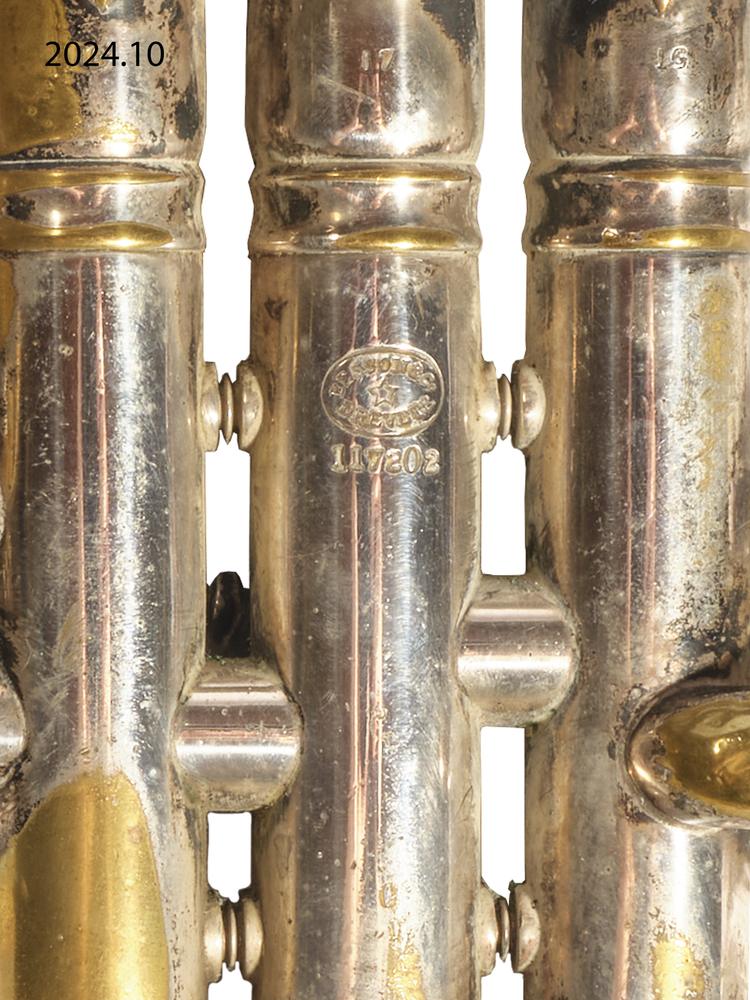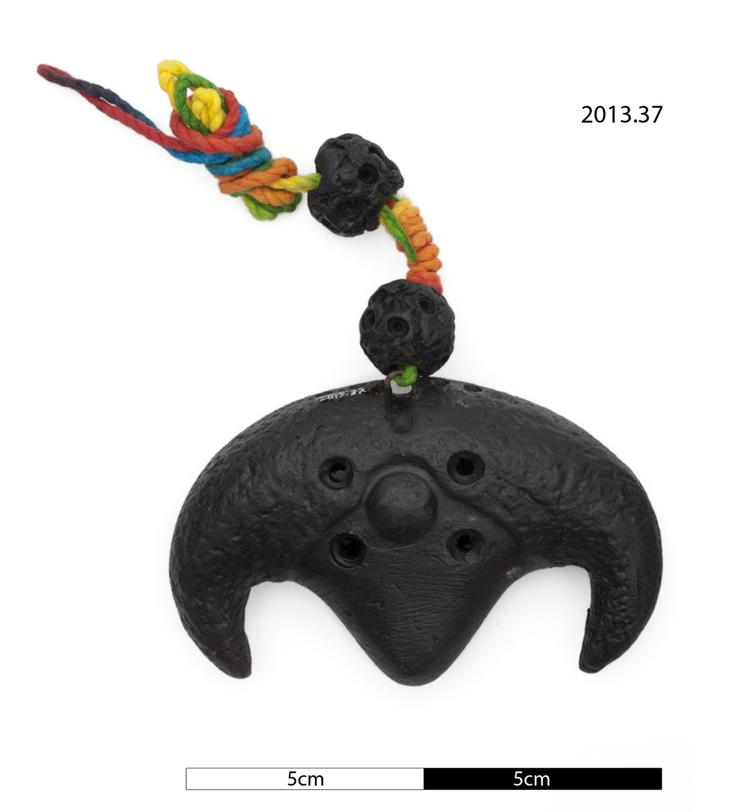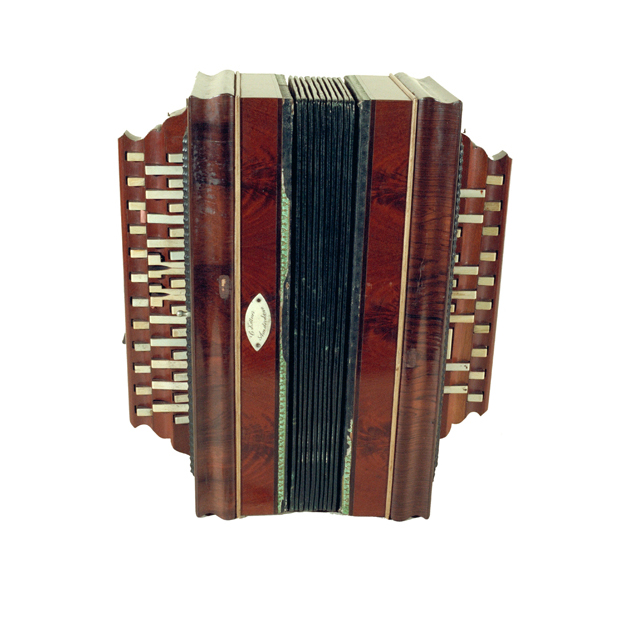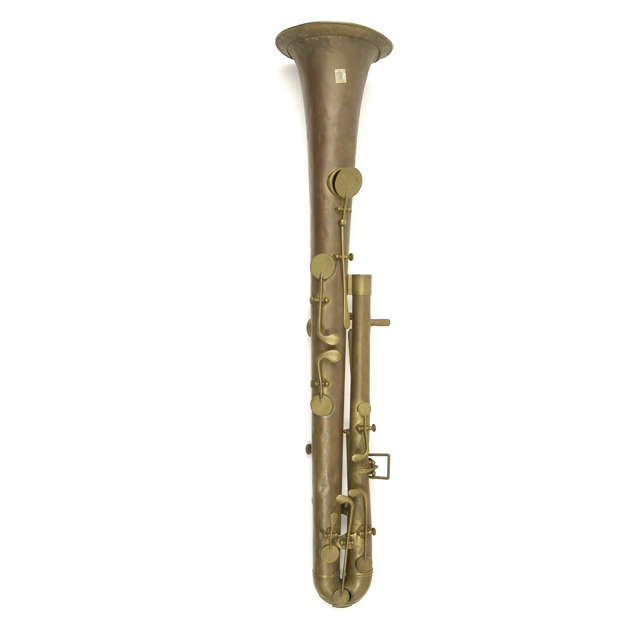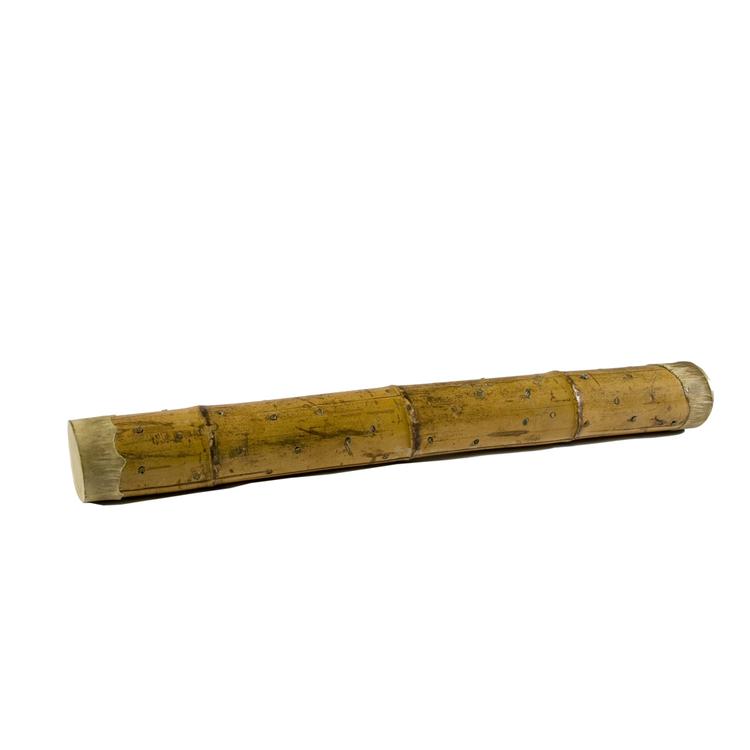
Rain stick made from bamboo with skin ends, filled with seeds or shells. Mexico?
It is tilted, shaken or tapped to produce the percussive sound reminiscent of rainfall. The body of the Rainmaker is made from bamboo or hollowed dried cactus with sealed ends. Its interior has a maze or spiral of cactus spines, palm slivers or wooden pegs down which small lava pebbles, shells or sometimes beans, cascade to reproduce the sound of rainfall. The Rainmaker's origins are disputed. Some suggest it was invented by the Aztecs and spread through South and Central America. Although this is possible there are no accounts of such an instrument in Spanish documentation of the time, neither is there any archaeological finds to strongly support this. It is also suggested that the Rainmaker was invented for shamanistic reasons and was used by the Diaguita Indians of Chile, traditional farmers of the Atacama Desert in Northern Chile to invoke rain spirits and produce the rain necessary for their crops to flourish. The fact that the Atacama Desert is one of the driest areas in South America may have lent weight to such a theory. Another theory is that Rainmakers were created by native peoples in the rain forest. They took a hollowed out branch from a tree, covered both ends and used it to carry their seeds and precious items from one place to another as they travelled. Inside the branch were thorns or sticks that would "catch" the seeds as they fell, creating a noise that sounded like the slow drizzle of rain. Similar instruments can be found in Africa that use gourds in place of the cactus. An African Reed Shaker consists of a series of strung together reeds with pebbles inside them which, when tipped, produce a Rainmaker type sound.
Rainmakers are tilted, shaken, or tapped to produce a percussive sound similar to rainfall. The origins of rainmakers are disputed - some suggest it was originally invented by the Atzecs, however there are not any archeological records to support this; others suggest rainmakers were invented by the Diaguita people of Chile for shamanistic purposes; others believe that rainmakes were created by people native to the South American rainforests. Similar instruments can also be found in Africa, though they use gourds in place of cacti.



